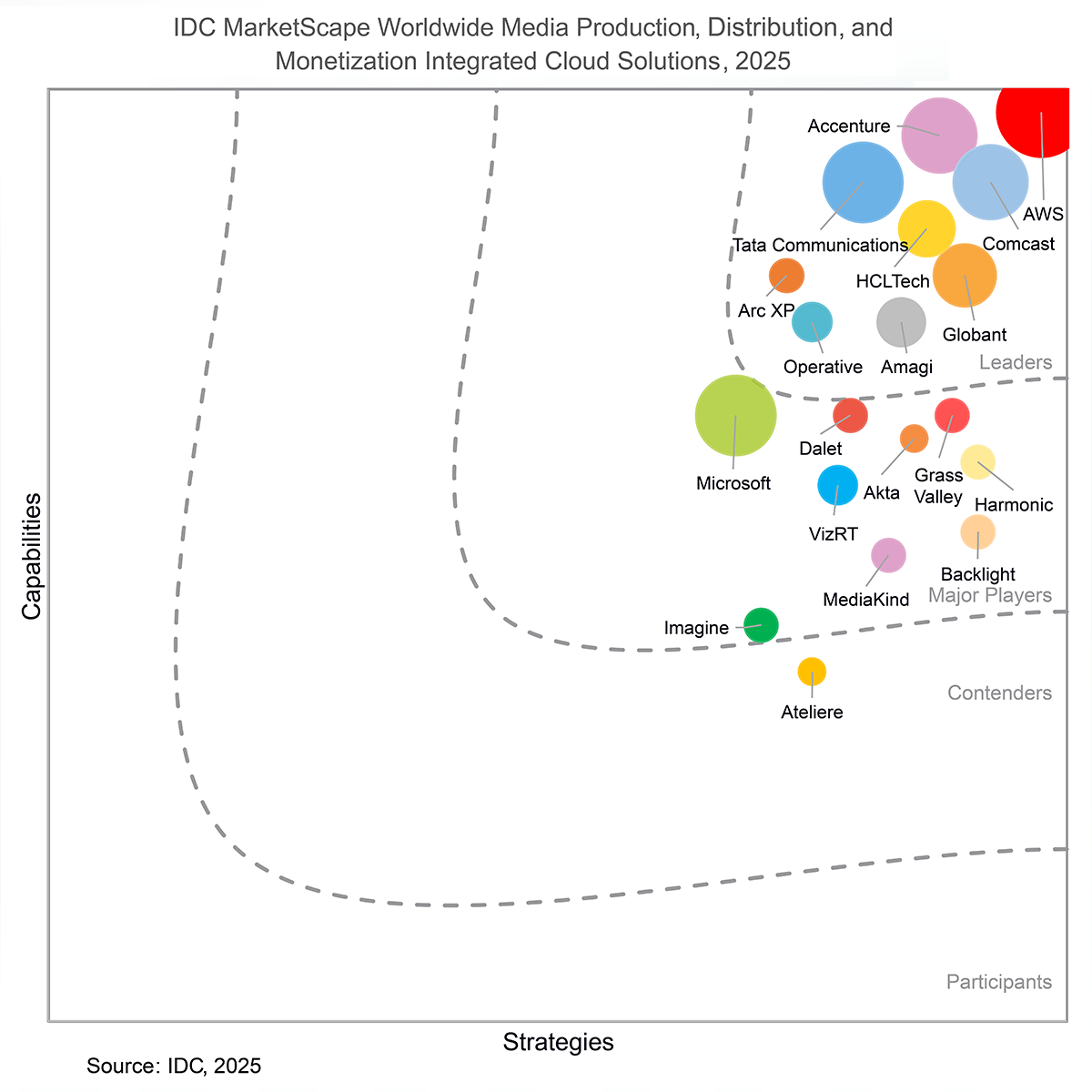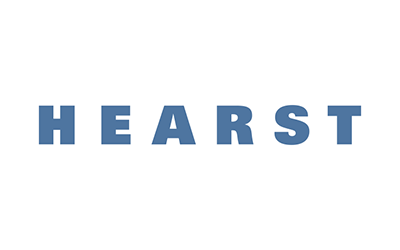- Industry›
- AWS for Media & Entertainment
AWS for Media & Entertainment
Deliver breakthrough experiences with cloud-based solutions for M&E
IDC MarketScape
IDC names Amazon Web Services (AWS) as a Leader in the 2025 MarketScape for Worldwide Media Production, Distribution, and Monetization Integrated Cloud Solutions. Download the report today.

Amazon Nova is a new generation of foundational models for media and entertainment use cases
Frontier intelligence for content generation and understanding
 Amazon Nova helps media and entertainment companies enhance audience experiences, optimize content archives, and increase monetization through innovative, multimodal AI solutions. Learn more about Amazon Nova ➜
Amazon Nova helps media and entertainment companies enhance audience experiences, optimize content archives, and increase monetization through innovative, multimodal AI solutions. Learn more about Amazon Nova ➜
The Hearst Corporation uses Amazon Nova to enhance subscriber experiences
 "Amazon Nova Pro surprised me with the details and eloquent summaries it was able to extract from video content. […] its video understanding capabilities offer the opportunity to use more sources of information for research and content creation at scale, enhancing our subscriber experiences." - Peter Goldstein, Chief Product and AI Strategist, The Hearst Corporation Learn more about Amazon Nova Pro ➜
"Amazon Nova Pro surprised me with the details and eloquent summaries it was able to extract from video content. […] its video understanding capabilities offer the opportunity to use more sources of information for research and content creation at scale, enhancing our subscriber experiences." - Peter Goldstein, Chief Product and AI Strategist, The Hearst Corporation Learn more about Amazon Nova Pro ➜
Musixmatch uses Amazon Nova Reel to help music artists create their own music videos
 "The Amazon Nova Reel model will help democratize music video creation for emerging artists. […] Artists can easily customize their videos and tweak them to match different music styles using natural language prompts to align with their artistic vision. We're proud to make professional music video generation accessible to all.” - Marco Paglia, Musixmatch Co-President Learn more about creative content generation with Amazon Nova ➜
"The Amazon Nova Reel model will help democratize music video creation for emerging artists. […] Artists can easily customize their videos and tweak them to match different music styles using natural language prompts to align with their artistic vision. We're proud to make professional music video generation accessible to all.” - Marco Paglia, Musixmatch Co-President Learn more about creative content generation with Amazon Nova ➜
IBC 2025 Demo Showcase
IBC2025 brings together the global media, entertainment, and technology community to shape the future of our industry. Explore the AWS for Media & Entertainment demos.

Create content. Connect workflows. Captivate audiences.
AWS for M&E helps customers reimagine their business models with the cloud. With a comprehensive set of services, solutions, and partners, M&E customers can keep pace with changes in viewing behavior, new innovations in content creation, data-driven monetization, generative AI, and customer engagement.
Reimagine Media & Entertainment with AWS
Purpose-built services for M&E
Purpose-built services for M&E
Produce high-impact creative projects and outstanding viewing experiences with Media Services on AWS.
Tools for building generative AI applications
Generative AI-powered applications
Partners
Discover solutions from an extensive network of industry-leading AWS Partners who have demonstrated technical expertise and customer success in building M&E solutions on AWS.
AWS Marketplace
Media and entertainment solutions from AWS Partners are also available on AWS Marketplace, a digital catalog of third-party software, services, and data that makes it easy to find, buy, deploy, and manage software on AWS.
AWS Marketplace
Media and entertainment solutions from AWS Partners are also available on AWS Marketplace, a digital catalog of third-party software, services, and data that makes it easy to find, buy, deploy, and manage software on AWS.
Amagi CLOUDPORTXpress
 A cloud-based channel playout platform to launch and manage broadcast-grade linear channels. Learn more »
A cloud-based channel playout platform to launch and manage broadcast-grade linear channels. Learn more »
Arc XP
 An integrated ecosystem of cloud-based tools that create and distribute content, drive digital commerce, and deliver powerful experiences. Learn more »
An integrated ecosystem of cloud-based tools that create and distribute content, drive digital commerce, and deliver powerful experiences. Learn more »
Aspera on Cloud
 A hosted service to quickly and reliably send and share your files and data sets of any size and type across a hybrid cloud environment. Learn more »
A hosted service to quickly and reliably send and share your files and data sets of any size and type across a hybrid cloud environment. Learn more »
